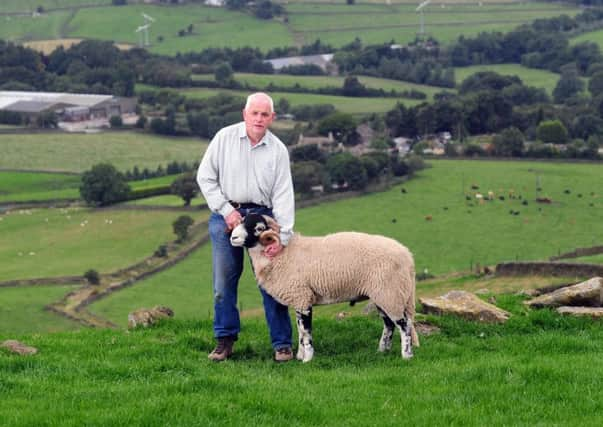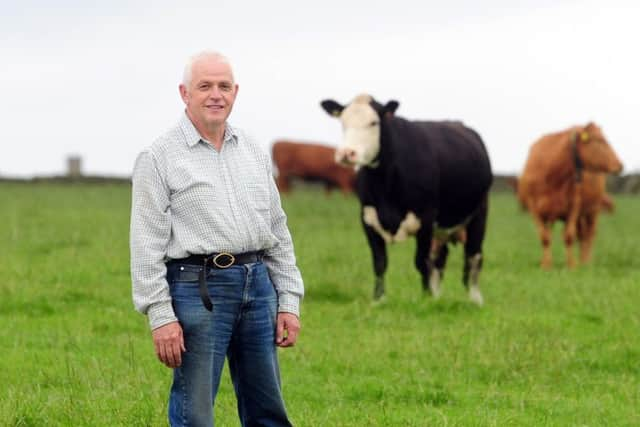Show proud of hometown breed


Penistone Show president for the past four years Jeff Pears of Flash House Farm, Millhouse Green has a flock of 50 breeding ewes within his much larger sheep farming business.
“We keep them to show our support for the breed. It’s important that local breeds are still around and there seems to be a bit more interest in the White Faced Woodland at present with quite a few farmers getting involved and a number of Yorkshire shows with breed classes.
Advertisement
Hide AdAdvertisement
Hide Ad“Having our own hometown breed is something unique. We’re proud of that as we are also proud to be South Yorkshire’s biggest agricultural show. It’s always been a part of my life and I remember walking from home to the showground in the 1960s and taking part in competitions with either a sheep or a terrier.


“The show has kept its family spirit and when the previous show president, a friend of mine, was concerned that he might let the show down by not being able to attend four years ago I stood in. I’m still standing in now. It’s a great show because of those who come and the people who give their time freely that are so dedicated. I’m a firm believer that any show or business is only as good as the people involved.”
Jeff is a local man born and bred. He only had one ambition when in his teens and has grown several commercial concerns related to agriculture from having started out keeping pigs on his father’s smallholding of just four acres.
‘I wanted to be a farmer but my father said I should get a trade or be involved with an industry away from farming so I worked at David Brown Gears in Penistone when I left school. I left at 17 when told I had to attend night classes. I didn’t have the time because by then I was keeping my own pigs and increasing the numbers I was fattening.’
Advertisement
Hide AdAdvertisement
Hide AdJeff now has 5000 breeding sheep and 370 breeding cattle across his 1500 acres with son Graham working alongside him and runs other businesses including power generation from wind turbines and biomass, but he has concerns over how farmers are having to increase livestock numbers because of market forces that he believes are weighted against UK agriculture.


“Farmers are on a treadmill of having to run faster and faster. There were a lot of farmers around here who would milk 20 cows and were as well off doing that as they are today milking 250 cows. Those who have gone from keeping 500 sheep to the numbers we have are not seeing any real benefit because of the price. At Penistone Show we do what we can to educate people about food and where it comes from but if everyone buys simply on price we will always struggle to compete. Producing stock to high levels of welfare standards when imports are coming in that don’t have to comply to ours is not a level playing field.”
Jeff has never lost his love of farming and he makes a point of encouraging young people into the industry. You get the feeling some might quake at how he started.
“When I was 17 I would be up and with the pigs at 3 o’clock in the morning until 10 at night seven days a week, but I’d still get out with my mates on a Friday night. One of them said he wouldn’t be off to sleep by the time I was back down the road with a truck on Saturday mornings.
Advertisement
Hide AdAdvertisement
Hide Ad“I used to love going to livestock markets at Holmfirth, Huddersfield, Penistone and Barnsley with my father. We came out of pigs in the late 90s and today we have four main sheep flocks of Swaledales, Mules, Texels and the prolific lambing New Zealand Highlander composite with around 1000+ in each flock, plus three smaller flocks including the White Faced Woodlands, pure Texels and crossing type Blue Faced Leicesters.
“We lamb in three separate blocks in February, March and April and have around 300-400 Swaledales bred pure with the rest going to the Blue Faced Leicester to bring the Mule. We cross the Mules with the Texel or Suffolk tup and retain some Texel X Mules for breeding, crossing them with the New Zealand Primera tup, another composite that acts as a terminal sire. We put our ewe hoggs to Charollais tups.
“We try to buy in as little as possible and other than one or two we aim to produce all our own tups. The majority of our fat lambs go deadweight.”
Stabiliser cattle are produced with fattened bulls finished by 15 months at 650 kilos.